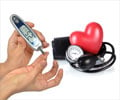Amlodipine and Valsartan Medication Information
Learn everything you need to know about Amlodipine and Valsartan-pronunciation, uses, dosage guidelines, indications, and when to take or avoid it.
Get up-to-date information on side effects, precautions, warnings, and proper storage to ensure safe usage.
Explore Amlodipine and Valsartan brand names commonly used in India and internationally, along with detailed pricing information. Consult your healthcare provider for tailored medical advice.
Generic Name : Amlodipine and Valsartan Pronunciation : am LOE de peen val SAR tan ICD Code : Y52.5 Therapeutic Classification : Anti- HypertensivesBrand Names or Trade Names of Amlodipine and Valsartan
International :
Exforge
Why is Amlodipine and Valsartan Prescribed? (Indications)
This combination medication contains a calcium channel blocker and an angiotensin II receptor antagonist, prescribed for high blood pressure (hypertension).When should Amlodipine and Valsartan not be taken? (Contraindications)
Contraindicated to pregnant women and patients with known hypersensitivity.What is the dosage of Amlodipine and Valsartan?
PO- The recommended dose is one tablet once daily (5/160 mg to 10/320 mg).How should Amlodipine and Valsartan be taken?
It comes as a tablet to take by mouth, with or without food.What are the warnings and precautions for Amlodipine and Valsartan?
• Caution should be exercised in patients with history of kidney or liver disease, congestive heart failure, chest pain, heart attack, any allergy, who are taking other medications, during pregnancy and breastfeeding.• It may cause dizziness, do not drive a car or operate machinery and get up slowly from bed while taking this medication.
• Do not use potassium supplements or salt substitutes while on amlodipine and valsartan, unless your doctor has advised.
What are the side effects of Amlodipine and Valsartan?
Most Common - Fluid retention and vertigo.Blood - Disease of the lymph nodes.
Heart - Palpitations, fast heart rate and chest pain.
Eye and ENT- Ear pain.
Gastrointestinal - Diarrhea, nausea, constipation, difficulty in swallowing, abdominal pain, stomach inflammation, vomiting, abdominal discomfort, abdominal distention, dry mouth, intestinal inflammation.
General - Fatigue, sweating, rapid weight gain, weakness, feeling like you might pass out, fever.
Immune System - Seasonal allergies.
Metabolic - Gout, non-insulin dependent diabetes mellitus, decreased level of potassium in blood and increased blood cholesterol.
Musculoskeletal - Joint pain, back pain, muscle spasms, pain in extremity, myalgia, joint swelling, breakdown of skeletal muscle tissue.
Central Nervous System - Headache, nerve pain, tingling, drowsiness, carpal tunnel syndrome, sleeplessness, anxiety, depression, dizziness and spinning sensation.
♦ Genitourinary - Blood in urine, kidney impairment, kidney stone, and erectile dysfunction.
Respiratory - Cough, throat pain, difficulty in breathing, nosebleed, nose block.
Skin - Itching, rash, excessive sweating, inflammation and redness.
Vascular Disorders - Flushing, hot flush.
 MEDINDIA
MEDINDIA
 Email
Email





